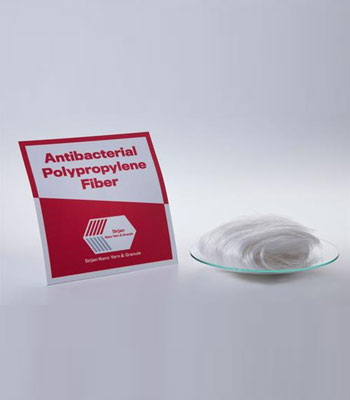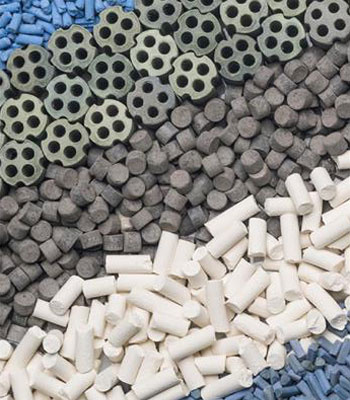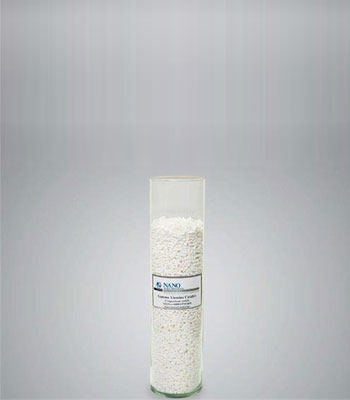Antibacterial Polypropylene Fiber
Introduction
This product is zinc oxide/polypropylene nanocomposite fibers, which due to the presence of zinc oxide nanoparticles show antibacterial properties. The use of zinc oxide nanoparticles in destroying the bacteria has considerable applications. Due to the presence of zinc oxide nanoparticles inside the polymeric network of the yarn, the rate of releasing nanoparticle is very low; so the long-term antibacterial effect of this product is considerable.
Antibacterial Tile
Introduction
Ceramic tiles due to having excellent chemical stability, as well as good appearance are widely used in different places such as hospitals and buildings. normally, the microorganisms reproduce easily on the ceramic tile surface, especially in wet environment. The silver-titanium nanocomposite particles have an antibacterial effect which can kill more than 650 different types of bacteria and they are not harmful to the environment and the human body. The silver-titanium nanocomposite particles along with silver ions in the ceramic glaze, penetrate the cell walls of bacteria and microorganisms and prevent their growth and reproduction. These nanoparticles can be mixed with ceramic glaze as an additive.
Antibacterial Toilet
Introduction
When using public restrooms, people are often worried about sanitary issues and their related illnesses. People are often sensitive to this issue, so they take special care when using and touching the equipment. Genital infections, fungal infections, skin sensitization and infectious, and microbial diseases are one of the most common causes of these bacteria. This product is an antibacterial squat toilet containing zinc oxide nanoparticles. The antibacterial toilet has surfaces which are resistant to bacterial growth. Sanitary products like wash basin are coated with materials which remove hazardous microorganisms, such as bacteria, viruses, fungi and other germs. In comparison with other metal oxides, the application of zinc oxide in biomedical and antiviral fields is due to its compatibility, solubility in alkaline environments, and terminated polar surfaces.
Concrete Pavement Block
Introduction
Concrete is unique in construction and it is only an exclusive product for trading; so it involves a significant share of research and development, and income in the industry to itself. Concrete, a multi-phase, complex and nanostructured material, is a composite structure mainly composed of cement and water. Nanoscience and nanoengineering of concrete are phrases which describe two essential approaches regarding the application of nanotechnology in concrete. Up to now, concrete has been primarily known as a structural material. Nanotechnology is capable of making a multi-functional material from concrete. Concrete can be nanoengineered by incorporating nanoscale building blocks, nanoparticles, nanotubes, etc.
Desulfurization Catalyst containing Zinc Oxide Nanoparticles
Introduction
Sulfur compounds are one of the main pollutants of the air and chemical processes which damage human health, water resources, catalysts and other devices. Removing sulfur compounds is one of the main processes in fossil fuel applications. Various inorganic sorbents are used to remove H2S in such applications. Among sorbents, zinc oxide is one of the most important sorbents for removal of H2S at moderate temperatures. This advantage is due to the fact that the thermodynamics of the ZnO-H2S reaction is more favorable than other desulfurizing sorbents and also has a higher sulfur absorption capability. Nanotechnology, relying on its unique features, has improved the performance and properties of the products.
Desulfurization Nanocatalyst
Introduction
Oxides of sulfur and nitrogen are the main air pollutants that are also responsible for acid rain. Excessive sulfur content in petroleum fractions such as naphtha, in addition to causing air pollutants, can corrode tanks, reactors, pipes and fittings. Currently desulfurization is carried out using desulphurization catalysts adjacent to hydrogen; thus at a certain temperature and pressure, as well as a specific proportion of hydrogen, sulfur atoms convert to hydrogen sulfide. Catalysts based on γ–alumina are commonly used for desulphurization. Alumina has various applications including ceramic membranes, paints, refinery and chemical catalysts, pollution control and base catalyst. The mesoporous γ–alumina with pore diameter in the range of 2 to 50 nm due to its high specific surface area, high porosity, good thermal stability and suitable pore distribution is used as the most common base catalyst in desulphurization.

















